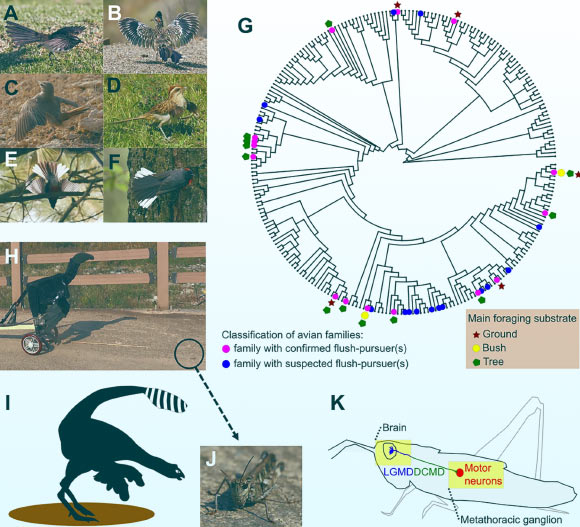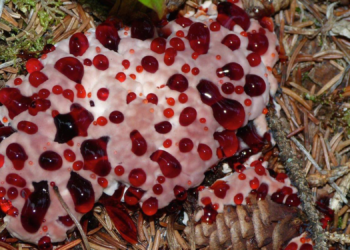Numerous non-avian dinosaurs possessed pennaceous feathers on their proto-wings and tail. Their functions remain unclear. Seoul National University researcher Jinseok Park and colleagues propose that these pennaceous feathers were used in displays to flush hiding prey through stimulation of sensory-neural escape pathways in prey, allowing the dinosaurs to pursue the flushed prey.
“The early function of pennaceous feathers remains unclear,” Park and co-authors said.
“Over the past three decades, spectacular dinosaur fossils with diverse feather types have been discovered.”
“Among these fossils, pennaceous feathers, the type of feathers that is adaptively modified for flying in modern birds, are limited to Pennaraptora.”
“The earliest pennaceous feathers were present on the distal forelimbs as small ‘proto-wings’ and around the tip of the tail as distal caudal plumage in the early-diverging pennaraptorans, as preserved in Caudipteryx, a two-legged, peacock-sized pennaraptoran dinosaur that lived approximately 124 million years ago.”
“Proto-wings were too small to be used for powered flight. The functions of proto-wings and caudal plumage might have been related to foraging/hunting or other behaviors.”
The authors hypothesized that the proto-wings may have been used for ‘flush-pursuit’ foraging, a hunting strategy observed in multiple species of contemporary insectivorous and omnivorous bird species such as the greater roadrunner (Geococcyx californianus) and the northern mockingbird (Mimus polyglottos).
This strategy consists of predators using displays of contrasting-colored feathers on their wings and tails to startle prey out of hiding and into fleeing, at which point they can be pursued and caught.
To test their hypothesis, the researchers built a robot named Robopteryx, basing it on the size, shape, and estimated movement range of Caudipteryx.
They then used Robopteryx to imitate several variations of flush-pursuit display…
Read the full article here







